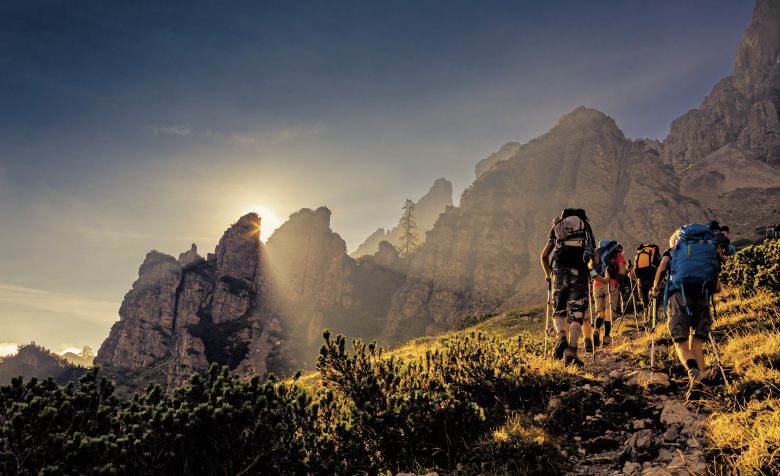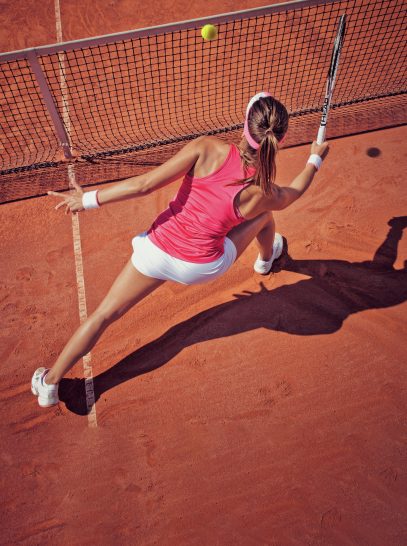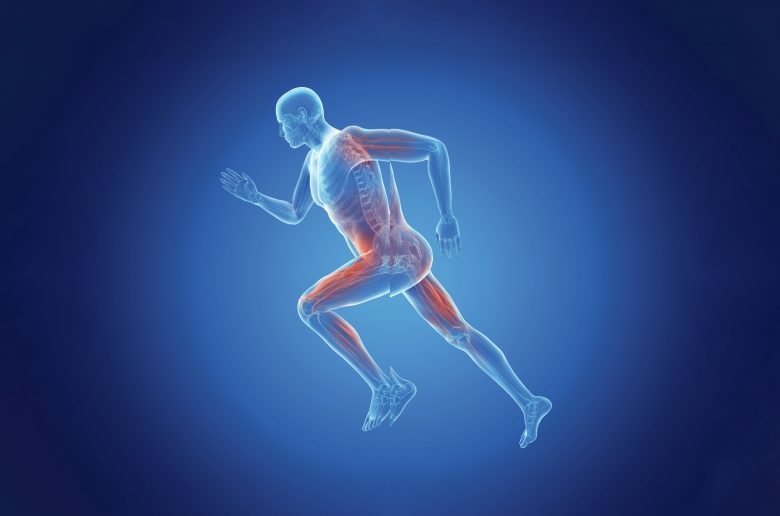The psychology of climbing
Mental skills for success
George Atherton examines the mental challenges of climbing and the benefits it brings
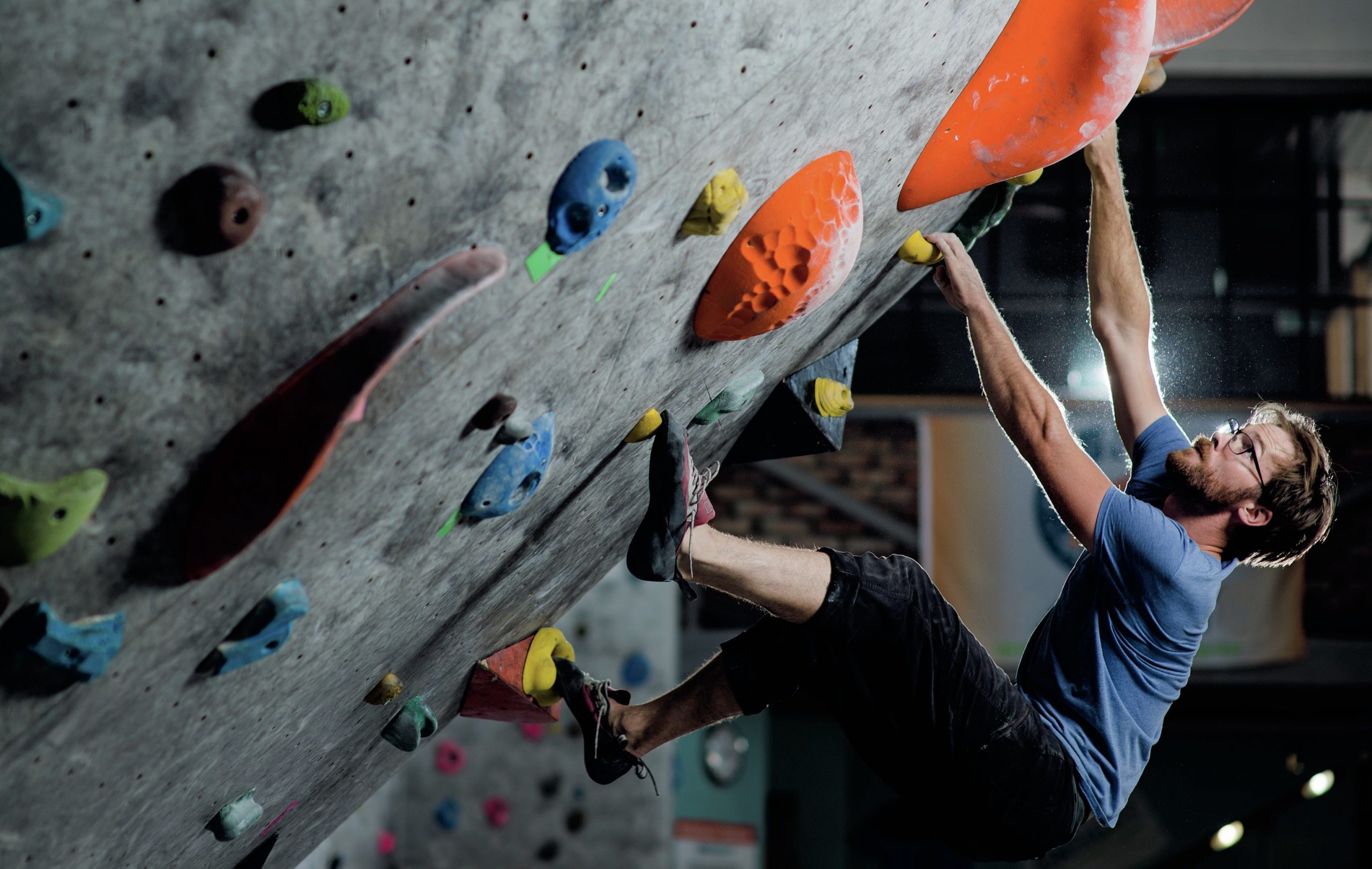
EXAM LINKS
This article is relevant to the A-level PE specifications for AQA, Edexcel and OCR (self-efficacy and confidence and stress management).
The sport of climbing made its Olympic debut at the 2020 summer Games in Tokyo, Japan. The physical abilities of the climbers were evident with strength, flexibility and muscular endurance needed in the different aspects of the event.
Sport climbing’s Olympic debut included three disciplines — speed, boulder and lead — grouped together awarding just one set of medals for all three disciplines. Speed climbing is a head-to-head race up a vertical 15-metre wall. The fastest athlete goes through to the next round in a knockout system. Bouldering is the most powerful and dynamic event.
Climbers are challenged on four boulder problems and have 5 minutes to complete each one. These problems challenge the body physically and the mind to figure out the best route. The climber that does the most boulders in the least number of attempts is the winner.
The finale is lead climbing. Athletes climb one at a time on the same long route gunning for the top. This requires power endurance as well as composure and grit to get high on the route. The climber’s final position in each discipline are multiplied together and the lowest scoring athlete is pronounced the winner.
KEY TERM
Vicarious experience Watching another performer doing a task successfully that develops confidence.
A mental challenge
Most climbers agree that in addition to physical skills, the mental skills needed to be successful in climbing are vitally important. Rebecca Williams, in her book Climb Smarter: Mental Skills and Techniques for Climbing, argues that in studies of emotive responses in climbers, psychological skills have a more important influence than physiological skills on both the outcome of climbing events and the wellbeing of the climber.
Mental skills used in climbing are varied and they are important at all levels. You have hopefully come across some of these psychological skills in your A-level studies. During local indoor bouldering competitions held at climbing gyms the climbers experience a relaxed approach to competition. They can record their own score without officials and, crucially, climbers can watch each other and converse about the best ways to complete the climbs. This can dilute the level of self-doubt climbers may experience when trying to figure out a climb alone.
As the climbers wait for their turn, they may often see others attempting the route that they are about to climb. If the observed climber is successful, this could give a feeling of increased confidence to the observer, especially if the observed climber is familiar to them and perceived to be of similar ability. The thinking is along the lines of, ‘if they can do it, so can I’. Albert Bandura, in his theory of self-efficacy, suggested that one of the four factors that is important in developing confidence is vicarious experience — when the performer sees others doing the task and draws confidence from their success. Climbers use other performers as role models on which to base their efforts.
Eric Hörst, discussing the influence of climbers who associate with each other in his article ‘Ten mental strategies to improve climbing performance in climbing and beyond’, suggests that climbers who surround themselves with positive people, who train with those who encourage and offer support rather than look for excuses, are more likely to be successful in their climbs and more motivated to continue trying to succeed — task persistence is enhanced.
Elite level
As competitive levels increase, when climbers compete in regional finals or major national events, the psychological challenges become more varied. At elite events climbers will be isolated, unable to see their fellow competitors performing on the wall before they make their own attempt. All they can do is listen to the crowd and try to visualise the upcoming climb that they saw in the observation period, which happens before the competition starts.
Once they are called out onto the mats to start climbing, all eyes are focused on them, and they must perform in the spotlight.
Imagery and visualisation
During these periods of permitted observation, the climber must develop what Rebecca Williams calls ‘visual inspection skills’. According to Williams, the climber needs to read the route, visualise the movements needed to complete that route and repeat those movements during the climb. The mental skill of route previewing is therefore important in climbing, but at the elite level sport climbers use enhanced techniques of visualisation and imagery to help develop a mental plan of techniques and moves they are about to use to master the route. Imagery and visualisation both involve the creation of a mental image. That image is then used not only to help with physical movements, but to build confidence and overcome anxiety.
In visualisation, the climber creates a mental picture of a technique or move that has been used successfully in training and then pictures themselves using that same move on the climb they are about to attempt.
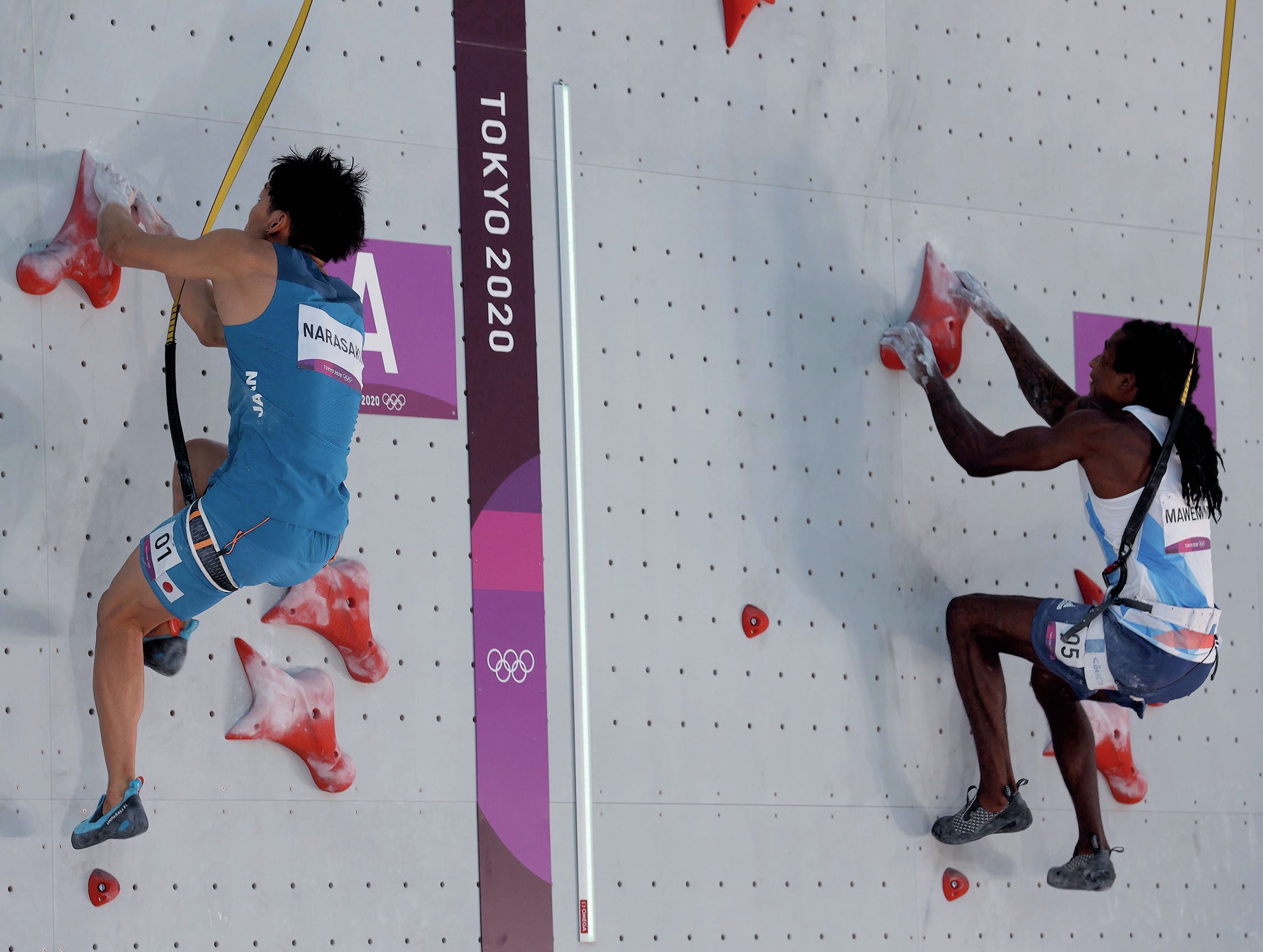
The skill needed in this method is to transfer the mental image of the move to the physical action on the climb, bearing in mind that adaptations may be needed to the techniques due to the varied nature of the route.
The technique of imagery also uses a mental image, but this method adds further details to the process — it attempts to re-create the feelings of pride and satisfaction associated with previous successful climbs so that confidence is enhanced and anxiety is reduced. Thinking about past success and the positive emotions associated with that success helps to calm nerves before attempting the climb.
The isolation period is a good time for the climber to use psychological techniques and Bill Cole, writing for sportspsychologycoaching.com, developed enhanced imagery techniques for specific use by climbers. He divided the use of imagery into three time zones.
The ‘past time zone’ involves recreating a great move from past events that was used successfully to master a similar problem to the one about to be attempted. The climber should picture not only the physical aspects of the climb but recreate the feelings associated with the success.
The ‘future time zone’ involves the climber picturing themselves succeeding on the route they are about to attempt, using the move recreated in the past time zone. The mental skill involved in this process is to transfer the technique used in the past to the climb about to be attempted and create a picture of using that technique at a specific point on the climb.
The ‘now time zone’ is used when attempting the climb. As the climber is in action, they must focus on handholds or foot placements and concentrate on the techniques needed to make a successful move when performing the climb. Cole has coached these techniques to climbers for many years and claims they have improved climbing performance considerably.
Performing for a crowd
The ability to focus on the climb both before and during the attempt is another important psychological skill, especially when performing in front of a crowd. Psychologist Robert Zajonc, discussing the effects of others on performance, suggested that the crowd could have either a positive or negative effect on performance.
In competition climbing, the climber competes individually with the eyes of the crowd fixed on them, a daunting situation that can increase both anxiety and level of arousal. To reduce such levels of anxiety Cole and Hörst suggest using breathing techniques and ritualisation. Attachment breathing is a technique that requires the climber to exhale a small amount of air as they start to make a move for the climbing hold and continue to exhale until contact with the hold is made. This helps to focus on the move and block out the crowd. Focus on the climbing rather than on the crowd can reduce the negative impact of an audience.
Ritualisation involves the climber developing a pre-climb routine that, once established, can create a feeling of familiarity to reduce anxiety and direct focus on the climb rather than the crowd. The ritual might involve a sequence such as check shoes, apply climbing chalk, recall images, control breathing, then begin. The ritual brings a sense of comfort to ease nerves just before the action begins.
On the other hand, some elite climbers — probably due to their experience in performing in front of a crowd — use the crowd to increase their motivation and can be seen urging the crowd to cheer before they climb, drawing energy from the support. This is especially true on powerful climbs where they need to be as pumped up as possible. In these instances, the crowd support can enhance climbing performance. For example, at the International Federation of Sport Climbing (IFSC) World Championships 2019, Slovenian climber Janja Garnbret turned to the crowd at the top of a boulder route to thank them for cheering her to success.
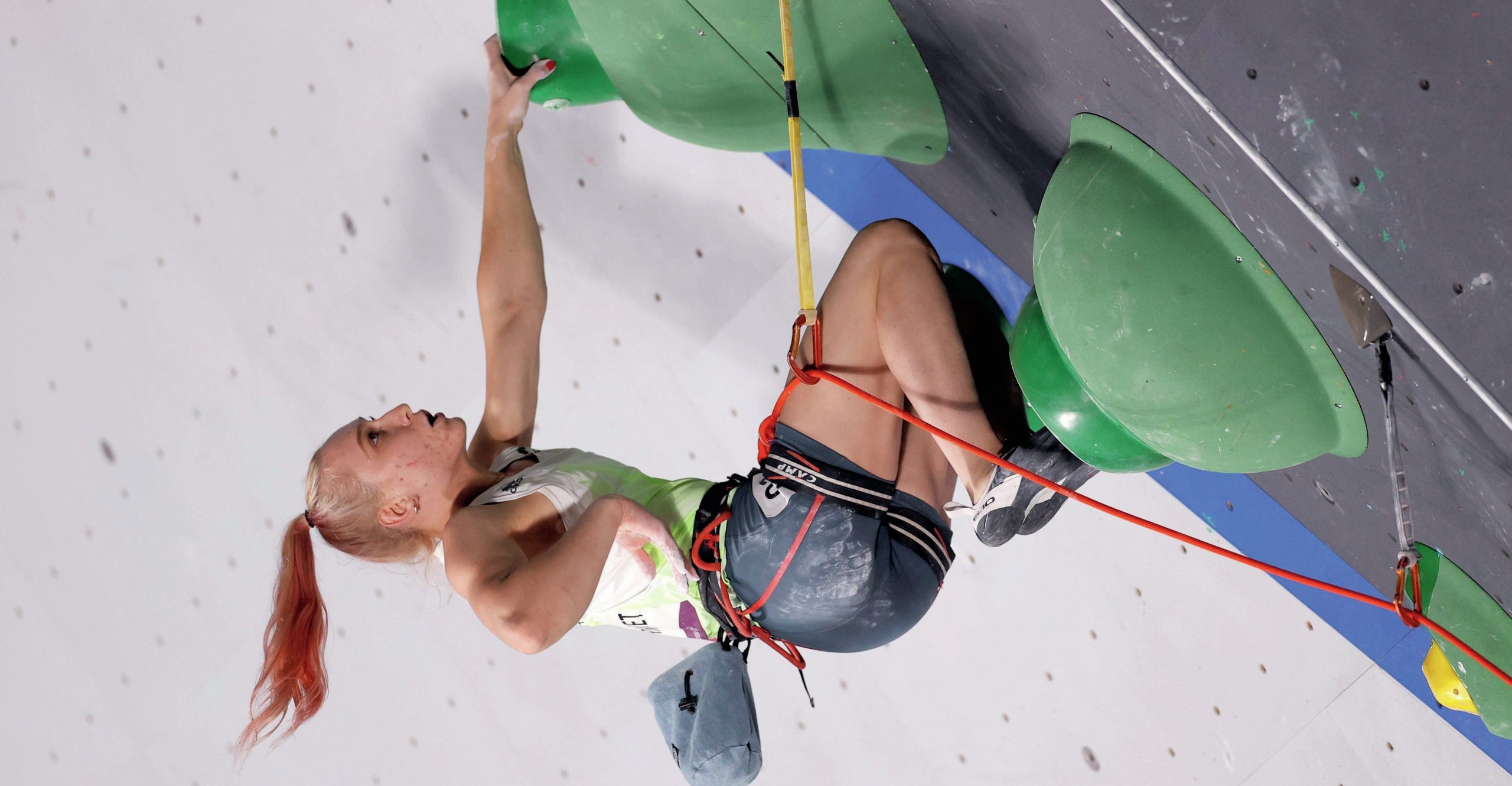
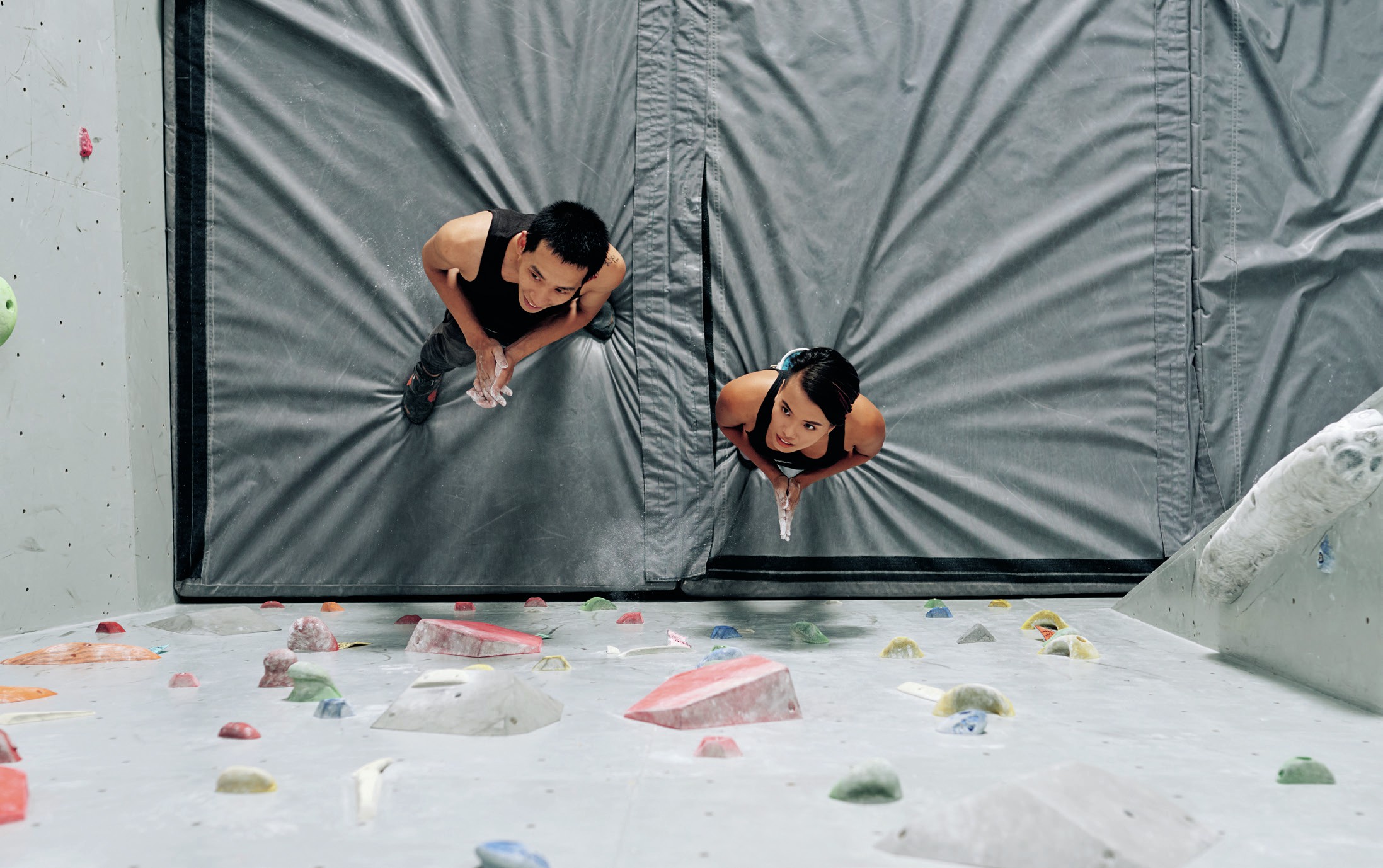
Mental practice
In the 2020 Olympic Games the event of speed climbing was introduced. Unlike other climbing events the route is pre-set and always the same, therefore the more established technique of mental rehearsal can be used to practice before the event. In psychomotor speed events, improvements in reaction time, even by the smallest of margins, can be vital for success. Williams suggests that mental practice, when the climber goes over the well-rehearsed set sequence in the mind before the event, can be responsible for fractional gains in reaction time and provide the speed climber with an advantage. Such fractional gains may be all that is needed to secure a gold medal finish.
At the Annual International Conference of Cognitive, Social and Behavioural Sciences in February 2019, Dagmar Hrušová, in a study of climbing activity (‘Experiencing In Climbing And Psychological Effects Of Sport Climbing’), suggested that there is a significant positive difference in mental wellbeing in climbers after 3 months of climbing activity. Perhaps, since climbers have become familiar with the use of the psychological techniques discussed, their mental as well as physical health is improved. Sports psychology plays a major part in success.
RESOURCES
Wlliams, R. (2021) Climb Smarter: Mental Skills and Techniques for Climbing, Sequoia books
Cole, B. (2008) ‘The mental game of climbing’, sportspsychologyclimbing.com
Hrušová, D., Chaloupská, P. (2019) ‘Experiencing in climbing and psychological effects of sport climbing’, Cognitive -Social, and Behavioural Sciences – icCSBs 2018, Vol. 56, European Proceedings of Social and Behavioural Sciences (pp. 118–126), Future Academy, doi.org/10.15405/ epsbs.2019.02.02.14
Hörst, E. (2021) ‘Ten mental strategies to improve performance in climbing and beyond’, trainingforclimbing.com
Zajonc, R. B. (1965) ‘Social facilitation’, Science, New Series, Vol. 149, No. 3681
Bandura, A. (1977) ‘Self-efficacy: toward a unifying theory of behavioural change’, Psychological Review, Vol. 84, No. 2, pp. 191–215, https://doi.org/10.1037/0033- 295X.84.2.191


